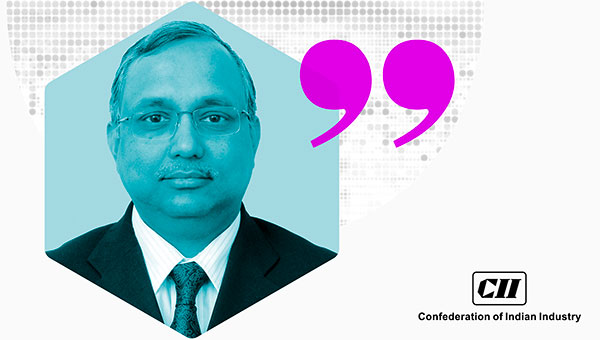Resources for journalists
The report shows that research and development (R&D) and other investments that drive worldwide innovative activity continued to boom in 2021 despite the COVID-19 pandemic, but challenges are emerging in translating innovation investments into impact.
The GII finds that productivity growth - normally spurred by increased innovation - has in fact stagnated. It also finds that current technological progress and adoption show signs of slowing growth despite the recent flourishing of R&D expenditure and venture capital investments. However, with more careful and attentive nurturing of innovation ecosystems, a new era of innovation-driven growth led by Digital Age and Deep Science innovation waves could take off.
This year's GII finds that innovation is at a crossroads as we emerge from the pandemic. While innovation investments surged in 2020 and 2021, the outlook for 2022 is clouded not just by global uncertainties but continued underperformance in innovation-driven productivity. This is why we need to pay more attention to not just investing in innovation, but how it translates into economic and social impact. Quality and value will become as critical to success as quantity and scale.
Among the GII's key findings:
- The top global corporate R&D spenders increased their R&D expenditure by almost 10 percent to over USD 900 billion in 2021, higher than in 2019 before the pandemic. This increase was primarily driven by four industries: ICT hardware and electrical equipment; Software and ICT services; pharmaceuticals and biotechnology; and construction and industrial metals.
- Investments in global R&D in 2020 grew at a rate of 3.3 percent, but slowed from the historically high 6.1 percent R&D growth rate recorded in 2019. Government budget allocations for the top R&D spending economies showed strong growth in 2020. For 2021 government R&D budgets, the picture was more varied, with spending growing in the Republic of Korea and Germany, but falling in the US and Japan.
- Venture capital (VC) deals exploded by 46 percent in 2021, recording levels comparable to the internet boom years of the late 1990s. Latin America and the Caribbean and Africa regions witnessing the strongest VC growth. The VC outlook for 2022 is more sober however; tightening monetary policies and the effect on risk capital will lead to a deceleration in VC.
In its annual ranking of the world's economies on innovation capacity and output, the GII shows some key changes in the top 15 of the ranking, with the United States climbing to the 2nd position, the Netherlands reaching the 5th position, Singapore reaching 7th, Germany reaching 8th and China up one place to 11th and on the doorstep of the top 10.
Canada is back among the top 15 global innovators (15th). Türkiye (37th) and India (40th) enter the top 40 for the first time. Beyond these, Viet Nam (48), the Islamic Republic of Iran (53rd) and the Philippines (59th) are the middle-income economies with the fastest innovation performance growth to-date.
Global rankingsAll 2022 rankings
- Switzerland (Number 1 in 2021)
- United States (3)
- Sweden (2)
- United Kingdom (4)
- Netherlands (6)
- Republic of Korea (5)
- Singapore (8)
- Germany (10)
- Finland (7)
- Denmark (9)
- China (12)
- France (11)
- Japan (13)
- Hong Kong, China SAR (14)
- Canada (16)
- Israel (15)
- Austria (18)
- Estonia (21)
- Luxembourg (23)
- Iceland (17)
Several developing economies are performing above expectation on innovation relative to their level of economic development, including newcomers Indonesia, Uzbekistan and Pakistan. Eight innovation overperformers are from Sub-Saharan Africa, with Kenya, Rwanda and Mozambique in the lead. In Latin America and the Caribbean, Brazil, Peru and Jamaica are outperforming relative to development.
"With their rise in terms of innovation performance in the shadow of shocks to global supply chains, Türkiye and India are positively enriching the global innovation landscape, while Indonesia shows promising innovation potential, " says GII Co-editor and Dean of the Saïd Business School at Oxford University, Soumitra Dutta. "Other regional champions like Chile and Brazil in Latin America, and South Africa and Botwana in Sub-Saharan Africa, have improved their relative innovation performance."
Global leaders in innovation in 2022

| Region / Rank | Economy | GII 2022 Global Rank |
|---|---|---|
| Northern America | ||
| 1 | United States of America | 2 |
| 2 | Canada | 15 |
| Sub-Saharan Africa1 | ||
| 1 | South Africa | 61 |
| 2 | Botswana | 86 |
| 3 | Kenya | 88 |
| Latin America and the Caribbean | ||
| 1 | Chile | 50 |
| 2 | Brazil | 54 |
| 3 | Mexico | 58 |
| Central and Southern Asia | ||
| 1 | India | 40 |
| 2 | Iran (Islamic Republic of) | 53 |
| 3 | Uzbekistan | 82 |
| Northern Africa and Western Asia2 | ||
| 1 | Israel | 16 |
| 2 | United Arab Emirates | 31 |
| 3 | Türkiye | 37 |
| South East Asia, East Asia, and Oceania | ||
| 1 | Republic of Korea | 6 |
| 2 | Singapore | 7 |
| 3 | China | 11 |
| Europe | ||
| 1 | Switzerland | 1 |
| 2 | Sweden | 3 |
| 3 | United Kingdom | 4 |
Northern America
Northern America, composed of the United States and Canada. The United States climbs to the 2nd position, while Canada is back among the top 15 global innovators, moving up to 15th place.
The United States scores best in the world on 15 of the 81 GII 2022 innovation indicators, including global corporate R&D investors, venture capital investors, the quality of its universities, the quality and impact of its scientific publications, and the value of corporate Intangible asset intensity. Canada scores best in venture capital recipients, joint ventures and strategic alliance deals and computer software spending.
Europe
Europe -continues to host the largest number of innovation leaders - 15 in total - that rank among the top 25. Out of the 39 European economies covered, twelve move up the rankings this year: the Netherlands (5), Germany (8), Austria (17), Estonia (18), Luxembourg (19), Malta (21), Italy (28), Spain (29), Poland (38), Greece (44), the Republic of Moldova (56) and Bosnia and Herzegovina (70).
Switzerland remains the world's leader in innovation for the 12th consecutive year. It leads globally in innovation outputs, and specifically in patents by origin, software spending, high-tech manufacturing and production and export complexity. Sweden (3) comes top in infrastructure and business sophistication worldwide, leading in indicators such as researchers, R&D expenditures and knowledge-intensive employment.
Germany reaches its highest ranking since 2009 after having entered the top 10 in 2016, leading globally on global corporate R&D investors. Estonia makes notable progress this year, breaching the top 20, and scoring a global leading performance for indicators venture capital deals, ICT services imports, new business creation and mobile app creation.
South East Asia, East Asia, and Oceania
Two South East Asia, East Asia, and Oceania (SEAO) region economies are among the top 10 global innovators - the Republic of Korea (6) and Singapore (7); and five others are in the top 25 - China (11), Japan (13), Hong Kong, China (14), New Zealand (24) and Australia (25). Singapore, China and New Zealand improved their rankings this year.
Within the region as a whole, Viet Nam (48), the Philippines (59), Indonesia (75), Cambodia (97) and the Lao People's Democratic Republic (112) have made the greatest advances over the past decade. These economies lead in key innovation indicators, too. Viet Nam leads worldwide in high-tech imports, and the Philippines in high-tech exports.
Indonesia makes a leap this year, achieving its best position since 2012. It leads worldwide in entrepreneurship policies and culture, and has made notable improvements in Innovation linkages and in Intangible assets, performing well in indicators such as finance for startups and scale-ups, and corporate intangible asset intensity.
Central and Southern Asia
India (40) leads the region and reaches the top 40, after making it into the top 50 in 2020. The Islamic Republic of Iran (53) and Uzbekistan (82) follow.
India is the innovation leader in the lower middle-income group. It continues to lead the world in ICT services exports and holds top rankings in other indicators, including venture capital receipt value, finance for startups and scaleups, graduates in science and engineering, labor productivity growth and domestic industry diversification.
The Islamic Republic of Iran takes 3rd position among the lower middle-income group, and performs on innovation above expectations for its level of development for the second consecutive year. It leads worldwide in indicators such as trademark filings and graduates in science and engineering.
Uzbekistan climbs by 4 ranks; it overperforms on innovation relative to development for the first time in 2022.
Sri Lanka (85), Pakistan (87) and Bangladesh (102) jumped up the rankings this year. However, only Pakistan has steadily gained position over time.
Northern Africa and Western Asia
Israel (16), Cyprus (27), the United Arab Emirates (UAE) (31) lead this region on innovation.
Israel has been an innovation leader for the past 15 years. It leads the world in venture capital deals, females employed with advanced degrees, international patent applications filed by WIPO's Patent Cooperation Treaty (PCT) per gross domestic product and ICT services exports as a proportion of total trade.
The UAE edges closer to the top 30, and continues to rank in the top 5 in the number of researchers in businesses and R&D financed by the private sector.
Türkiye (37) makes it to the top 40. It ranks 4th worldwide in intangible assets, showing notable strengths in industrial designs, trademark filings, and corporate intangible asset intensity.
An additional ten economies within the region move up the rankings, including notable improvers Saudi Arabia (51), Qatar (52), Kuwait (62), Morocco (67) and Bahrain (72).
Latin America and the Caribbean
Chile (50) - the only Latin American country in the top 50 - leads the Latin America and Caribbean region, followed by Brazil (54) - a newcomer to the top 3 for the region - and Mexico (58). Costa Rica (68) drop out of the regional top 3.
Chile ranks well in tertiary enrolment and new businesses. Brazil has made marked improvements in innovation outputs, notably in creative outputs such as intangible assets and online creativity, as well as in trademark filings and mobile app creation. Mexico leads in indicators such as creative goods exports, high-tech imports and exports.
Eight out of the 18 economies covered within the region rose in the rankings. Colombia (63), Peru (65), Argentina (69) and the Dominican Republic (90) all saw substantial rank increases this year. Peru is notable as it positions itself as a global leader this year in indicators such as availability of loans from microfinance institutions, graduates in science and engineering and utility models filings. Peru, Brazil and Jamaica (76) also performed on innovation above expectation for their level of development.
Continental Sub-Saharan Africa
South Africa (61) leads the region, followed by Botswana (86) and Kenya (88). Sixteen economies in the region moved up the GII rankings. Beyond Mauritius and Botswana, Ghana (95), Senegal (99), Zimbabwe (107), Ethiopia (117) and Angola (127) make noteworthy improvements.
South Africa tops in market capitalization, while Botswana performs well in indicators such as loans from microfinance institutions and intellectual property payments. Namibia (96) leads worldwide in expenditure on education and performs well above the regional average on human capital and research.
Sub-Saharan Africa is the region with the largest number of overperforming economies in innovation (8), with Kenya holding the record of outperformer for twelve consecutive years. Rwanda (105) and Mozambique (123) have consistently outperformed too.
Burundi (130) makes a return to the GII this year thanks to improved data availability, while Mauritania (129) joins the GII for the first time.
GII 2022 thematic focus asks: What is the future of innovation-driven growth?
The GII 2022 sketches out the possibility of two novel innovation waves: (i) a Digital Age innovation wave built on supercomputing, artificial intelligence and automation, which is on the verge of making ample productivity impacts across all sectors and fields of scientific research, and (ii) a Deep Science innovation wave built on breakthroughs in biotechnologies, nanotechnologies, new materials and other sciences, which is revolutionizing innovations in four fields of key importance to society: Health, Food, Environment and Mobility.
However, the GII 2022 warns that the positive effects of these two novel waves will take time to materialize; many obstacles, particularly in the area of technology adoption and diffusion, have to be overcome first.
Productivity is at the core of what we want our societies and economies to be tomorrow, in particular if we want to combine higher levels of equality while using natural resources more sensibly. A true revolution is driving innovation today, guided by Digital Age and Deep Science waves. We have a collective responsibility to draw the lessons of recent crises to put this revolution on the right track, and gear it to the future we want.
GII Co-Editor and Portulans Institute Co-Founder Bruno Lanvin
GII 2022 corporate network partners on innovation

"With innovation at the core of India's growth story, the Global Innovation Index will be instrumental to shape policies and help design an actionable agenda for pursuing innovation excellence. This year's GII theme on The Future of Innovation Productivity Stagnation or Revival is particularly relevant for India as we are experiencing significant transformations, from space technology and smart cities to health care and telecommunications, all driven by innovative solutions."
- Chandrajit Banerjee, Director General, Confederation of Indian Industry

"This year's theme proved to be very relevant considering the challenges faced by Brazil to increase its productivity - in decline over the last 40 years. The publication will help guide public and private sector actions to achieve innovation-driven growth by promoting and supporting science, technology and innovation policies in our country"
- Robson Braga de Andrade, President, National Confederation of Industry CNI)

"Innovation-driven growth has enormous potential to solve the challenges that we face such as productivity, economic development and environmental sustainability. Furthermore, it increases the importance of technological research. In this context, GII has presented an invaluable reference to strategise innovation. In line with the GII, Turkish Exporters Assembly continues to lead exporters' adaptation to the age of digitalization via innovation"
- Mustafa Gültepe, President, Turkish Exporters Assembly (TİM)

"The Global Innovation Index highlights this year a historic opportunity for energy companies such as Ecopetrol, located in biodiverse Colombia, in Latin America, as an optimum place in the world for developing clean technology innovative use cases in the near future. This empowered by a strong digital and talented ecosystem. It is an opportunity, a bridge that take us from stagnation to revival."
- Alexis Ocampo, Technology Excellence Manager, Ecopetrol
About the Global Innovation Index
The Global Innovation Index 2022 (GII), in its 15th edition this year, is published by WIPO, in partnership with the Portulans Institute and with the support of our Corporate Network partners: the Confederation of Indian Industry (CII), the Brazilian National Confederation of Industry (CNI), Ecopetrol (Colombia), and the Turkish Exporters Assembly (TİM). In 2021, an Academic Network was established to engage world-leading universities in GII research and to disseminate GII data and findings to the academic community.
Since its inception in 2007, the GII has shaped the innovation measurement agenda and become a cornerstone of economic policymaking, with an increasing number of governments systematically analyzing their annual GII results and designing policy responses to improve their performance. The GII has also been recognized by the UN Economic and Social Council in its 2019 resolution on Science, Technology and Innovation for Development as an authoritative benchmark for measuring innovation in relation to the Sustainable Development Goals (SDGs).
Published annually, the core of the GII provides performance measures and ranks 132 economies on their innovation ecosystems. The Index is built on a rich dataset - the collection of 81 indicators from international public and private sources - going beyond the traditional measures of innovation since the definition of innovation has broadened. It is no longer restricted to R&D laboratories and published scientific papers, and rather, is more general and horizontal in nature, including social, business model and technical aspects.
For each economy a one-page profile is produced in which that economy's performance on all indicators is recorded, relative to all other economies in the Index. The economy profiles also highlight an economy's relative innovation strengths and weaknesses.
The GII 2022 is calculated as the average of two sub-indices. The Innovation Input Sub-Index gauges elements of the economy that enable and facilitate innovative activities and is grouped in five pillars: (1) Institutions, (2) Human capital and research, (3) Infrastructure, (4) Market sophistication, and (5) Business sophistication. The Innovation Output Sub-Index captures the actual result of innovative activities within the economy and is divided in two pillars: (6) Knowledge and technology outputs and (7) Creative outputs.
The index is submitted to an independent statistical audit by the Competence Centre on Composite Indicators and Scoreboards (COIN) from the European Commission's Joint Research Centre. To download the full report visit: www.globalinnovationindex.org.
Framework of the Global Innovation Index 2022

Press contacts
WIPO
Samar Shamoon






